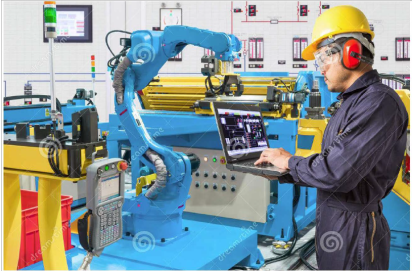Predictive Maintenance
<p> Predictive maintenance, where the condition of the machine and its basic parts were monitored to understand their health, and parts replaced when performance began to deteriorate.</p>

The maintenance journey has been a long, slow trek for most manufacturers. It began with reactive manufacturing – what we call the “break-fi mentality. It migrated to preventive maintenance, where work was done on a calendar schedule, and then to predictive maintenance, where the condition of the machine and its basic parts were monitored to understand their health, and parts replaced when performance began to deteriorate.

Predictive maintenance evaluates the condition of equipment by performing periodic (offline) or continuous (online) equipment condition monitoring. The ultimate goal of the approach is to perform maintenance at a scheduled point in time when the maintenance activity is most cost- effective and before the equipment loses performance within a threshold. This results in a reduction in unplanned downtime costs because of failure where for instance costs can be in the hundreds of thousands per day depending on industry. This is in contrast to time and/or operation count-based maintenance, where a piece of equipment gets maintained whether it needs it or not. The fundamental idea is to transform the traditional ‘fail and fix’ maintenance practice to a ‘predict and prevent’ approach.

The "predictive" component of predictive maintenance stems from the goal of predicting the future trend of the equipment's condition. This approach uses principles of statistical process control to determine at what point in the future maintenance activities will be appropriate.
Most predictive inspections are performed while equipment is in service, thereby minimizing disruption of normal system operations. Adoption of predictive maintenance can result in substantial cost savings and higher system reliability.
One goal is to transfer the predictive maintenance data to a computerized maintenance management system so that the equipment condition data is sent to the right equipment object to trigger maintenance planning, work order execution, and reporting.
To evaluate equipment condition, predictive maintenance utilizes nondestructive testing technologies such as infrared, acoustic (partial discharge and airborne ultrasonic), corona detection, vibration analysis, sound level measurements, oil analysis, and other specific online tests.
The proposed course wil present the main technologies and data analysis which are used nowadays in Predictive Maintenance. This is a very interesting issue for the Basque Country industrial area, and it is highly related with the expansion of the so called Industry 4.0 concept.

